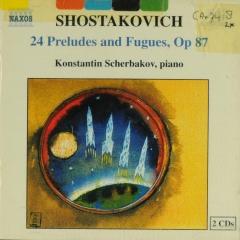In 1950 it was 200 years ago that Johann Sebastian Bach had died. Due to the festivities surrounding this commemoration, Dmitri Shostakovich was involved in the Bach commemoration in Leipzig. Here he was impressed by the playing of the young pianist Tatyana Nikolayeva. All these impressions inspired Shostakovich to create his 24 Preludes and Fugues op.87, following the example of Bach's Well-Tempered
… Clavier. During the presentation of this cycle in 1951, it turned out that this music was not readily accepted by the official authorities. Russian composers of the time were expected to put their creativity at the service of social and political ends; and it was questionable whether these monologues turned away from the public could be counted among them. Nevertheless, in the summer of 1952, Nikolayeva successfully defended this music in public. For a long time Nikolayeva was the only one to integrate these preludes and fugues. The registration of Sviatoslav Richter was also impressive, although it was not complete. Gradually, however, more and more integrated versions are on the market, of which that by Vladimir Ashkenazy is one of the most striking. But also less legendary greats know how to hit the deeper layers in this personal music well, as is clear from the excellent interpretation of Konstantin Scherbakov. (HJ) Gradually, however, more and more integrated versions are on the market, of which that by Vladimir Ashkenazy is one of the most striking. But also less legendary greats know how to hit the deeper layers in this personal music well, as is clear from the excellent interpretation of Konstantin Scherbakov. (HJ) Gradually, however, more and more integrated versions are on the market, of which that by Vladimir Ashkenazy is one of the most striking. But also less legendary greats know how to hit the deeper layers in this personal music well, as is clear from the excellent interpretation of Konstantin Scherbakov. (HJ)more







